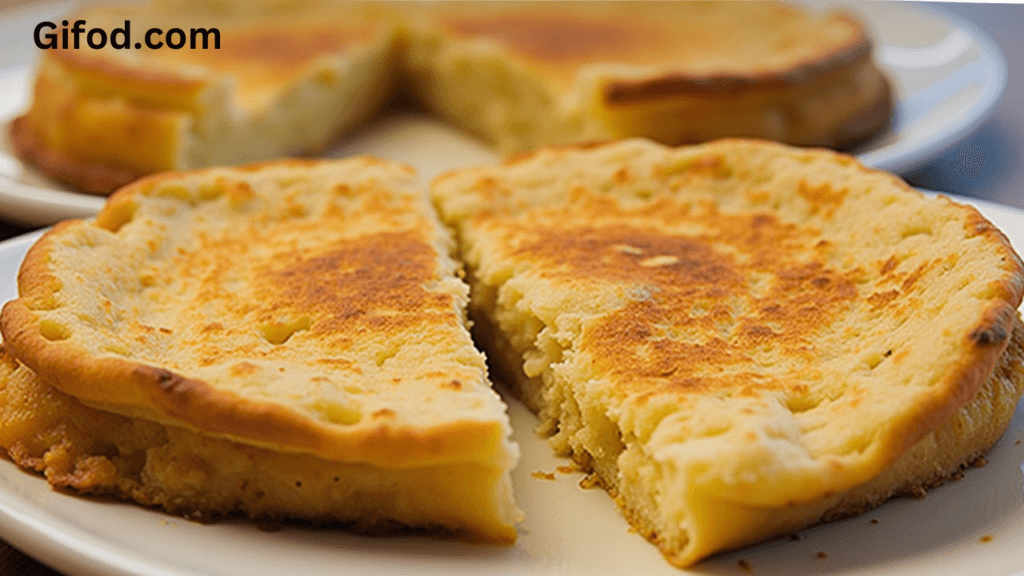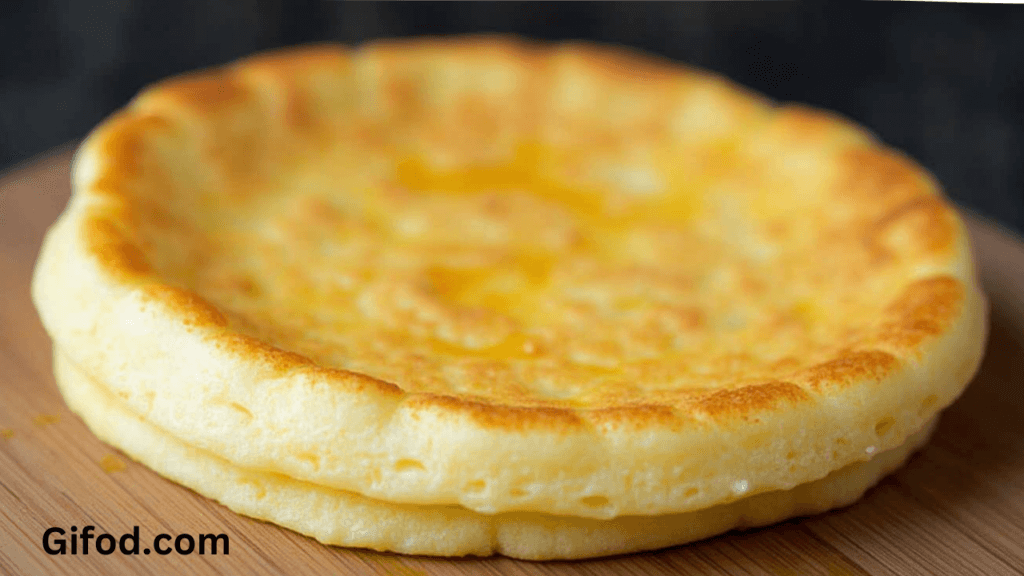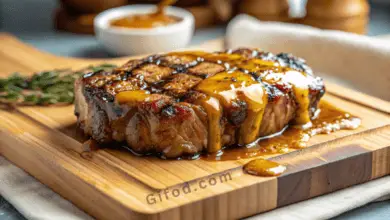Gordas de Nata: A Deep Dive into Mexico’s Beloved Sweet Treat 2025

What are Gordas de Nata?
Gordas de nata are thick, slightly sweet, and incredibly soft Mexican pancakes, traditionally cooked on a comal (a flat griddle). The name translates to “cream gorditas,” referring to the nata (cream) that is a key ingredient, giving them their characteristic richness and delicate flavor. Unlike American pancakes, they are typically smaller and denser, with a slightly spongy texture. They are a popular breakfast item, snack, or dessert, often enjoyed warm with a drizzle of honey, cajeta (goat’s milk caramel), jam, or simply on their own.
A History Steeped in Tradition: The Origins of Gordas de Nata
The exact origins of gordas de nata are somewhat shrouded in the mists of time, but they are deeply rooted in Mexican culinary history, likely dating back to pre-Hispanic times. The use of corn, a staple food in Mesoamerica, formed the basis of many early masa-based dishes. While the modern gorda de nata typically uses wheat flour, the connection to earlier corn-based gorditas is undeniable.
The introduction of dairy products by the Spanish during the colonial period significantly influenced Mexican cuisine. Nata, the thick cream that forms on top of unpasteurized milk, became a readily available ingredient. It’s believed that resourceful cooks began incorporating nata into existing gordita recipes, resulting in the richer, sweeter gorda de nata.
The regions most closely associated with gordas de nata are central Mexico, particularly the states of Hidalgo, Querétaro, Guanajuato, and Mexico State. These areas often have strong agricultural traditions, including dairy farming, making nata a common ingredient. Roadside stands selling freshly made gordas de nata are a familiar sight in these regions, attracting locals and travelers alike.
Regional Variations: Exploring the Diversity of Gordas de Nata
While the basic concept of a gorda de nata remains consistent, there are subtle regional variations in ingredients, preparation methods, and even the accompanying toppings.
- Hidalgo: Known for its particularly fluffy and slightly tangy gordas de nata, often using jocoque (a type of fermented milk product similar to buttermilk) in addition to or instead of some of the nata.
- Querétaro: Gordas de nata in Querétaro might be slightly sweeter and may incorporate vanilla extract or other flavorings.
- Guanajuato: Here, you might find gordas de nata with a slightly denser texture, sometimes incorporating piloncillo (unrefined cane sugar) for a deeper, molasses-like flavor.
- Mexico State: Gordas de nata in this region are often quite large and may be served with a wider variety of toppings, including fresh fruit, whipped cream, and even chocolate sauce.
These are just a few examples, and within each state, there can be further variations from town to town, and even family to family. Each variation reflects local ingredients, preferences, and culinary traditions.

The Anatomy of a Perfect Gorda de Nata: Key Ingredients and Their Roles
The beauty of gordas de nata lies in their simplicity. The core ingredients are readily available, but the quality of each ingredient plays a crucial role in the final product.
- Nata (Cream): This is the star ingredient, providing the signature richness, moisture, and delicate flavor. Traditionally, fresh nata from unpasteurized milk is used. However, heavy cream can be used as a substitute, although the flavor will be slightly different. The fat content of the nata is crucial for the texture, contributing to the soft, slightly crumbly interior.
- Flour: All-purpose wheat flour is typically used. The gluten in the flour provides structure, but the relatively low protein content compared to bread flour helps keep the gordas tender.
- Sugar: Granulated sugar adds sweetness. The amount of sugar can be adjusted to taste, but gordas de nata are generally only mildly sweet, allowing the flavor of the nata to shine through.
- Baking Powder: This leavening agent creates the characteristic lift and fluffy texture. It’s essential to use fresh baking powder for optimal results.
- Eggs: Eggs add richness, structure, and a slightly yellow hue. They also help bind the ingredients together.
- Butter: Melted butter contributes to the flavor and tenderness. It also helps prevent the gordas from sticking to the comal.
- Salt: A pinch of salt enhances the other flavors and balances the sweetness.
- Vanilla Extract (Optional): A small amount of vanilla extract can add a subtle aroma and flavor.
- Milk (Optional): Some recipes use a small amount of milk to adjust the consistency of the batter. The amount needed will depend on the thickness of the nata.
Mastering the Technique: How to Make Gordas de Nata
Making gordas de nata is a relatively straightforward process, but there are a few key techniques that will ensure success.
A Step-by-Step Guide to Homemade Gordas de Nata
Ingredients:
- 1 cup nata (or heavy cream)
- 2 cups all-purpose flour
- 1/2 cup granulated sugar
- 1 tablespoon baking powder
- 2 large eggs
- 1/4 cup melted butter
- 1/4 teaspoon salt
- 1 teaspoon vanilla extract (optional)
- Milk (optional, to adjust consistency)
Instructions:
- Prepare the Batter: In a large bowl, whisk together the flour, sugar, baking powder, and salt.
- Combine Wet Ingredients: In a separate bowl, whisk together the nata, eggs, melted butter, and vanilla extract (if using).
- Combine Wet and Dry: Gradually add the wet ingredients to the dry ingredients, mixing until just combined. Do not overmix. The batter should be thick but pourable. If it’s too thick, add a small amount of milk, a tablespoon at a time, until the desired consistency is reached.
- Heat the Comal: Heat a comal or a large, heavy-bottomed skillet over medium heat. You can test the heat by sprinkling a few drops of water on the surface; they should sizzle and evaporate quickly.
- Cook the Gordas: Lightly grease the comal with butter or oil. Pour about 1/4 cup of batter onto the hot comal for each gorda. Spread the batter slightly with the back of a spoon to form a circle about 4-5 inches in diameter.
- Flip and Cook: Cook for 2-3 minutes per side, or until golden brown and cooked through. The gordas should puff up slightly as they cook.
- Serve Warm: Remove the gordas from the comal and serve warm. Enjoy them plain or with your favorite toppings.
H3: Tips for Success
- Don’t Overmix: Overmixing the batter will develop the gluten in the flour, resulting in tough gordas. Mix just until the ingredients are combined.
- Control the Heat: The comal should be hot enough to cook the gordas quickly and evenly, but not so hot that they burn. Adjust the heat as needed.
- Use Fresh Ingredients: Fresh nata and baking powder will yield the best results.
- Don’t Crowd the Comal: Cook the gordas in batches, leaving enough space between them so they can cook evenly.
- Experiment with Toppings: Get creative with your toppings! Traditional options include honey, cajeta, jam, and fresh fruit.
Gordas de Nata Beyond Breakfast: Serving Suggestions and Pairings
While gordas de nata are a classic breakfast food, they can be enjoyed at any time of day. Their versatility makes them a perfect addition to various meals and occasions.
- Breakfast: Serve warm with honey, cajeta, jam, or fresh fruit. Pair with a cup of Mexican hot chocolate or café de olla (traditional spiced coffee).
- Snack: Enjoy gordas de nata on their own as a satisfying afternoon snack.
- Dessert: Top with whipped cream, ice cream, chocolate sauce, or a sprinkle of cinnamon sugar for a decadent dessert.
- Brunch: Include gordas de nata as part of a larger brunch spread, alongside other Mexican favorites like chilaquiles and huevos rancheros.
- Afternoon Tea: Serve mini gordas de nata with a selection of teas and other sweet treats for a unique afternoon tea experience.
The Cultural Significance of Gordas de Nata
Gordas de nata are more than just a food; they are a symbol of Mexican culinary heritage and tradition. They represent the ingenuity of Mexican cooks, who have transformed simple ingredients into a beloved dish enjoyed by generations.
- Family Traditions: Gordas de nata are often associated with family gatherings and special occasions. Many families have their own cherished recipes, passed down through generations.
- Roadside Stalls: The ubiquitous presence of gordas de nata stands along highways and in towns across central Mexico highlights their popularity and accessibility. These stands often serve as gathering places for locals and travelers.
- Connection to the Land: The use of nata, a product of dairy farming, connects gordas de nata to the agricultural traditions of the regions where they are most popular.
- Culinary Tourism: Gordas de nata are a popular item for culinary tourists seeking to experience authentic Mexican cuisine.

Gordas de Nata and Health: A Nutritional Perspective
While gordas de nata are undeniably delicious, it’s important to consider their nutritional value. They are relatively high in calories, carbohydrates, and fat, primarily due to the nata and butter.
Nutritional Breakdown (Approximate, per gorda):
- Calories: 200-250
- Fat: 10-15g
- Saturated Fat: 5-8g
- Cholesterol: 30-40mg
- Carbohydrates: 25-30g
- Sugar: 8-12g
- Protein: 4-6g
Health Considerations:
- Moderation is Key: Gordas de nata should be enjoyed in moderation as part of a balanced diet.
- Healthy Toppings: Opt for healthier toppings like fresh fruit, a small amount of honey, or a sprinkle of cinnamon instead of high-sugar options.
- Ingredient Substitutions: While not traditional, you can make some ingredient substitutions to reduce the calorie and fat content. For example, you could use a lower-fat cream or substitute some of the butter with applesauce. However, be aware that this will alter the texture and flavor.
Frequently Asked Questions about Gordas de Nata
Q: Can I use heavy cream instead of nata?
A: Yes, heavy cream is a suitable substitute for nata. The flavor will be slightly different, but the texture will be similar.
Q: Can I make gordas de nata ahead of time?
A: Yes, you can make the batter ahead of time and store it in the refrigerator for up to 24 hours. You can also cook the gordas and store them in an airtight container at room temperature for a day or two, or in the refrigerator for up to a week. Reheat them gently in a skillet or microwave before serving.
Q: My gordas de nata are too dense. What did I do wrong?
A: There are a few possible reasons: you may have overmixed the batter, used old baking powder, or the comal wasn’t hot enough.
Q: Can I freeze gordas de nata?
A: Yes, you can freeze cooked gordas de nata. Wrap them individually in plastic wrap and then place them in a freezer bag. They can be frozen for up to 2 months. Thaw them in the refrigerator or at room temperature before reheating.
Q: Are gordas de nata gluten-free?
A: Traditional gordas de nata are made with wheat flour and are therefore not gluten-free. However, you can find gluten-free recipes online that use alternative flours like rice flour or almond flour.
Conclusion: Embracing the Sweetness of Gordas de Nata
Gordas de nata are a testament to the richness and diversity of Mexican cuisine. From their humble beginnings to their enduring popularity, they represent a culinary tradition that continues to delight and nourish. Whether you’re a seasoned cook or a curious foodie, exploring the world of gordas de nata is a journey worth taking. So, gather your ingredients, heat up your comal, and experience the simple joy of this beloved Mexican treat. Remember to explore other culinary delights at gifod.com



